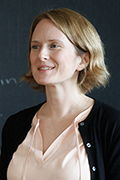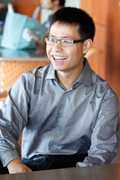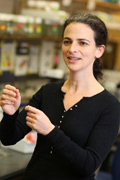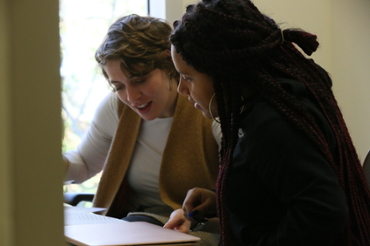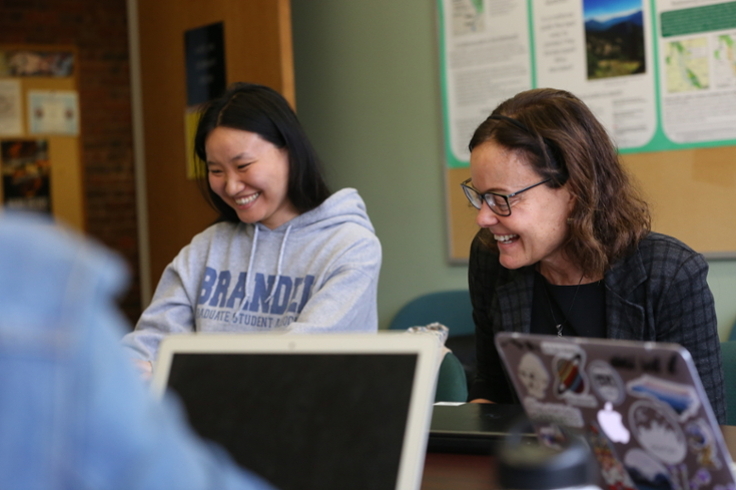Research Across Languages: An Interview with Computer Science Professor Constantine Lignos
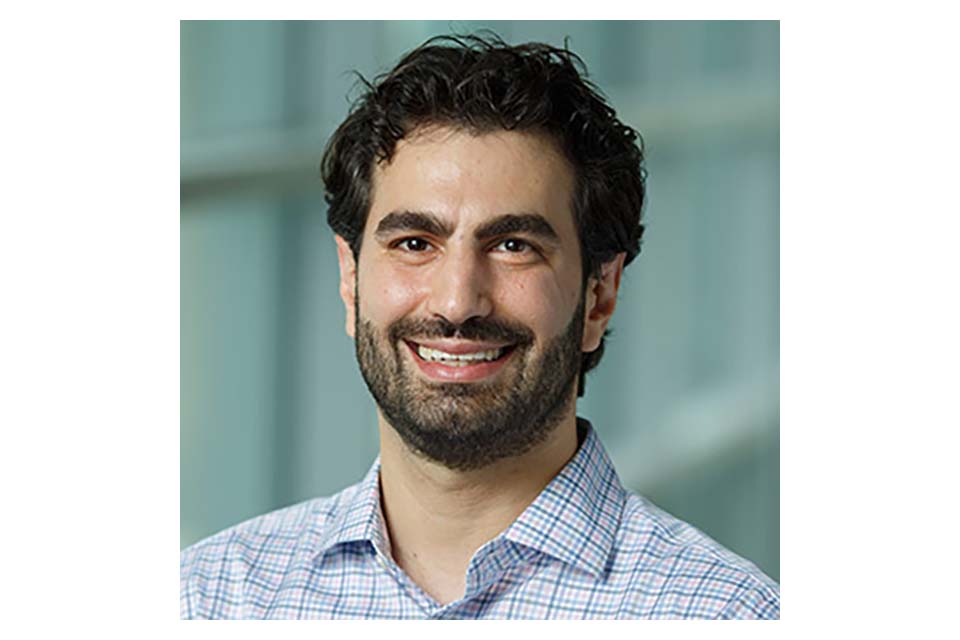
April 15, 2025
Abigail Arnold | Graduate School of Arts and Sciences
Constantine Lignos is an assistant professor of Computational Linguistics in the Computer Science Department at Brandeis University and this year’s winner of the Walzer Teaching Award. He teaches and works with a range of students, including those in the Computational Linguistics master’s program and the Computer Science PhD program. Lignos joined the Graduate School of Arts and Sciences (GSAS) to talk about his research into natural language processing and the exciting range of backgrounds that Brandeis students bring to their work.
This interview has been edited for clarity.
What’s your academic background, and how did you find yourself at Brandeis?
I studied at Yale, where I majored in Computer Science and Psychology, as an undergraduate. My initial interest was in computational modeling of human language acquisition and how language works in the mind, so my senior thesis was about potential models for infants learning syntactic structure. Afterwards, I worked at Microsoft for two years on Ford Sync, a voice command system that Microsoft developed for Ford. I decided that research was really interesting and that it was what I wanted to do, so I entered the PhD program in Computer Science at the University of Pennsylvania. There, my dissertation was at the intersection of computer science, linguistics, and cognitive science: it was about how children learn to identify word boundaries, how words are represented in the brain, and how that representation affects language change. Once I finished my PhD, I did a postdoc and then worked as a research scientist at two different places. I enjoyed research but wanted to return to a combination of teaching and research. University of Southern California Information Sciences Institute, where I was working, had an office in Waltham, and we would often hire graduates of the Computational Linguistics master’s program, so I became familiar with Brandeis. When the department was hiring for a faculty member in my area, I applied and got the job; I started here in the fall of 2019.
What are you currently researching?
The main focus of my research is natural language processing resources and models for less-resourced languages. There are languages, often spoken by millions, that don’t yet have much technology developed for them, even compared to others with a similar number of speakers. For example, Hausa, the most common Nigerian language, has 63 million speakers but not much dedicated technology. Hausa has a similar number of native speakers to French, but there’s a massive gap between the technology available for them. Big companies often do not think that it’s worth the money to develop technology in less-resourced languages, and when they do, it sometimes works poorly. I’ve done a lot of collaboration with folks who research African languages to develop resources; some of this research was funded by the Lacuna Fund.
Furthermore, less-resourced languages typically are Native languages of an area and have been historically suppressed by governments. One example is Northern Sámi, an Indigenous language in Scandinavia and Russia that was historically suppressed by the countries’ governments. It currently has about twenty thousand speakers. Jonne Sälevä, a PhD student in my lab, has been funded by the Finnish Cultural Foundation to work on Northern Sámi, so we have worked on machine translation of it and are trying to figure out the best ways to make it work when we have limited written material available. We are working on machine translations from Finnish to Northern Sámi and vice versa so that speakers of the two languages have options when interacting with each other.
Another big part of my research is named entity recognition (NER), which I am also teaching a course on this spring. NER is about finding the “things” in a piece of text, classically people, organizations, and locations. My PhD student Chester Palen-Michel and I are collaborating with eBay in applying NER techniques into understanding search queries – for example, if someone searched for “Avengers Nike sneakers,” we could use NER to identify that sneakers are the thing they want, Nike is the brand, and Avengers are the image they want on it. It can also be used to detect borrowings between languages.
What applications and broader significance does your research have?
It’s important that the speakers of these less-resourced languages be served by the digital world and able to access information. We can’t rely on big companies like Google and Facebook to do it for us, although they often build on the work we do. We often lead research in these areas and industry follows, which is great because resources can become available on more efficient platforms like Google Translate. We do the legwork, and industry follows. It’s also a small piece of positive impact to build technology for language communities that have been harmed.
What do you like about working with Brandeis graduate students? What are the strengths of Brandeis’s programs in Computational Linguistics and Computer Science?
I like that our graduate programs are generally small, so we can give the students individual attention. We get to know the students in a personalized way and focus on what’s best for every student.
Computational Linguistics draws a very intellectually diverse set of students with lots of different academic backgrounds; they might have a linguistics background, a Computer Science background, or something else. For example, one of my former research assistants, Andy Rueda, had studied film and television production, but he was very interested in AI and was able to use the program to pivot. He ended up writing a first author publication. The program also gets a lot of students who are interested in research and turn that into a career, either by doing a PhD or by going into a research-focused industry setting. They often come back for our networking receptions.
The Computer Science PhD program is also small and personalized. I can give students the individual attention that I did not get as much of doing a PhD at a large institution. We focus on students doing research from day one when they enter, and we also focus on teacher development. Students TA often and graduate knowing how to teach; they’re not just checking a requirement box.
Brandeis is a unique combination of a research university and a strong focus on liberal arts and well-rounded students. One of the exciting things for me has been that students at all levels have a wide set of curiosities and interests. Students’ diverse backgrounds enhance what we do because they bring a multitude of experiences to the program and to their research. At huge universities, often everyone does just one thing; here, the faculty and students do a lot of things and have unique combinations of interests.
